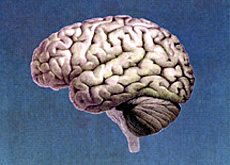New technique reveals brain changes

Scientists have succeeded for the first time in observing changes within the brain as they occur.
The ability to track individual brain cells is expected to help scientists explore how the brain forms memories and reacts physically to experiences.
Lausanne University’s Graham Knott, who wrote up the group’s findings, said the international research team had managed to watch a brain as it adapted to change.
Using laser and electron microscopes, researchers were able to see the brains of mice rewire after the animals’ whiskers were clipped.
“By changing the input to the brain, you’ve got a situation where you’re changing the connections,” Knott said.
“You knew you would get change… the way in which the cells receive the information changes,” added Knott.
“But to actually look at and see physical changes, that’s actually what’s happening, you’re actually watching the brain connect.”
Brain expert Michael Merzenich of the University of California at San Francisco confirmed that it was the first time the process had been witnessed. “No one has ever actually watched it happen,” he said.
Far-reaching implications
Ole P Otterson and P Johannes Helm of the University of Oslo, who wrote a commentary on the technique for the journal Nature, said it would “have far-reaching implications” for brain analysis.
Although developed on mice, scientists said the technique could help explain the workings of the human brain.
Brain cells, known as neurons, signal each other across minute gaps or synapses. Tiny spines then pick up these signals. Researchers involved in the study followed the growth and destruction of the spines over time.
They tracked the spines using mice specially bred to carry a gene which made some of their neurons glow.
The researchers then used laser and electron microscopes to peek inside mice brains.
In one study, scientists clipped the animals’ highly sensitive whiskers and then observed changes in the part of the brain that receives signals from the whiskers.
Two to four days later the number of spines created or lost in that area increased significantly, showing that new synapses were being created and others destroyed.
swissinfo
A team of researchers, including a scientist from Lausanne University, has succeeded in tracking changes in the brain.
The team carried out experiments on mice, which showed how the brain rewired following change.
The new technique is expected to help explain the workings of the human brain.

In compliance with the JTI standards
More: SWI swissinfo.ch certified by the Journalism Trust Initiative
You can find an overview of ongoing debates with our journalists here. Please join us!
If you want to start a conversation about a topic raised in this article or want to report factual errors, email us at english@swissinfo.ch.